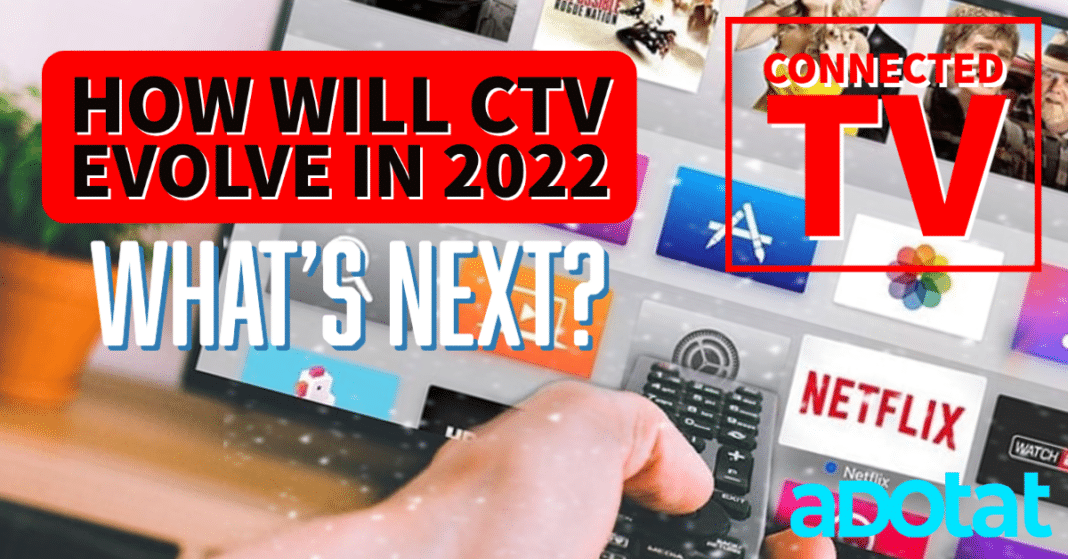Connected TV (CTV) is one of the most rapidly evolving platforms in the advertising world. In just a few short years, it has transformed from a niche platform to a must-have for any brand that wants to stay competitive. With its expansive reach and ability to deliver highly targeted, measurable ad campaigns, CTV is poised to take over the television landscape in the coming years.
The nature of CTV incentivizes brands to produce high-quality ads that engage audiences. Since viewers have so many options when it comes to what they watch on CTV, they are less likely to tolerate low-quality or intrusive ads. If your ad is not up to par, you run the risk of losing viewers and damaging your brand.
On traditional TV, viewers are at the mercy of what’s on their chosen channel at any given moment. If they don’t like what they see, tough luck—they’re stuck with it until the commercial break. But on CTV, viewers have the power of choice. If they don’t like an ad, they can simply change the channel and find content anywhere. That means brands have to work harder than ever to create ads that grab and keep viewers’ attention.
Contextual Engines Are Huge
Contextual engines will be vital to CTV success in the coming years. With so much content available on CTV, brands need a way to sift through all of the noise and target their ads specifically to the audiences they want to reach. Contextual engines use Artificial Intelligence (AI) to analyze data points like topic, tone, and style to help brands identify where their ad would be most impactful. Brands use CTV and related technologies to make advertising more accessible and speed up go-to-market implementation.
But simply having a CTV presence is not enough; success depends on getting the right ad in front of the right audience at the right time—and that’s where contextual engines come in. By understanding the context surrounding an ad opportunity and matching it with the right creative asset, contextual engines drive real business results for brands using CTV.
As CTV grows in popularity, so too will competition for ad space on the platform. In order to make sure your ad reaches your target audience, you will need to increase your budget for CTV advertising. This may seem like a daunting task, but keep in mind that CTV offers significantly more targeting options than traditional television, which means you will be able to get more bang for your buck with CTV advertising.
It will become a Performance Channel
In the past, CTV (connected TV) was difficult to measure and only utilized by name brands like Coca-Cola for brand awareness purposes. However, with the evolution of the space, CTV has come into its own as a powerful performance channel. Compared to linear TV where viewers had no control over what was played and when, CTV users have total control over what they watch and when. This gives them a more personal connection to the content and ads they see, making them more engaged overall.
Most CTV platforms allow users to utilize their smartphone as a remote control. With their smartphones, users can comment on what they see, look things up, or engage with an interactive ad on the screen. This second-screening behavior gives advertisers more opportunities to reach their audiences.
CTV enables advertisers to use ad formats that are interactive and engaging, such as Gamification: Advertisers can use game mechanics in their ads to make them more fun and engaging for viewers. For example, Adidas ran a campaign where viewers could score points by correctly answering questions about the brand.
Cordcutting is a Movement
With Netflix alone having over 60 million subscribers in the US , it’s no secret that cord-cutting is on the rise . This presents an opportunity for brands to produce tongue-in-cheek creative that speaks directly to cord-cutters . For example, a spot for an online streaming service could feature a family gathered around a television set arguing over which streaming service they should use . This type of creative not only resonates with cord-cutters , but also with anyone who has ever had difficulty choosing between multiple streaming services .
In order for brands to truly take advantage of all that CTV has to offer, they need to be willing to experiment with new formats and ideas . One way to do this is by creating interactive ads that allow viewers to choose their own adventure .
It’s All About Data
Another is by using data driven creative which personalized ads based on viewers’ previous interactions with your brand . These types of innovative formats will help you stand out from the crowd and make a lasting impression on potential customers .
Ciaran O’Kane, CSO at ExchangeWire, has some strong words about the role of CTV in the data-driven TV landscape. In a recent article, he claims that “CTV dominates the data-driven TV narrative” and that it is “a key segment of data-driven TV.” Strong words indeed. But is he right?
O’Kane makes some valid points about CTV’s importance in the data-driven TV ecosystem. First, he correctly observes that CTV is a huge driver for innovation in the industry. This is due in part to the fact that CTV allows for more targeted and personalized advertising than traditional TV does. Additionally, CTV provides advertisers with valuable data about viewers’ interests and behaviors. This data can be used to further optimize ad campaigns for maximum effectiveness. By harnessing the power of data, marketers are able to target their ads with unprecedented precision, ensuring that only the most relevant ads are served to the most receptive viewers.
While there are many benefits to using CTV, it’s important to remember that this platform is still in its early stages. As such, there are some kinks that need to be worked out and best practices that need to be established. That said, CTV is a powerful tool that should not be ignored. It offers brands the ability to reach a large audience with pinpoint accuracy and measure the results of their campaigns in real time. If you’re not already using CTV, now is the time to start. What do you think? Are you ready to jump on the connected TV bandwagon?










